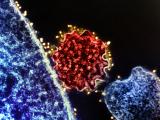The Indian government today confirmed that a 23-year-old man from Kerala has a Nipah virus infection, and another 86 case contacts are being monitored for the deadly disease, according to the Deccan Chronicle.
Officials said the patient, a college student, is hospitalized and in stable condition. They also said two of the case contacts have fevers, and two nurses who took care of the 23-year-old were also experiencing fevers and sore throats.
Early symptoms of Nipah are similar to the flu, with some cases quickly progressing to seizures and deadly encephalitis. According to the World Health Organization (WHO), Nipah's case-fatality rate is between 45% and 75%.
No known exposure
In May 2018, 17 people in Kerala died from Nipah in an outbreak connected to infected fruit bats found in a family farm's well.
The exposure for the current patient is unknown. Nipah's natural reservoir is the fruit bat, though pigs have been found to be the host in some Southeast Asian outbreaks. The virus can also be transmitted via human-to-human contact.
Kerala Health Minister K K Shailaja said of the new case, "We have confidence that we can face it. We have faced it in Kozhikode last year and contained it."
Nipah—a paramyxovirus—is found throughout South and Southeast Asia, and is one of nine WHO priority diseases for research and development. The virus was first identified in humans in Malaysia in 1999 in an outbreak connected to swine.
In 2017 the Coalition for Epidemic Preparedness Innovations (CEPI) pledged $460 million for vaccine research and development for Nipah, Lassa, and MERS, saying each virus had the capability to cause a major global epidemic.
See also:
Jun 4 Deccan Chronicle article
WHO Nipah key facts
Jan 19, 2017, CIDRAP News story "New $460 million efforts takes aim at MERS, Lassa, Nipah"



















